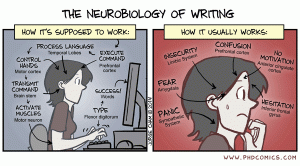
By: Fatu Badiane Markey
The theme of storytelling is often emphasized in the field of science. However, it is easy to forget the significance of presenting a clear and compelling story once all the experiments are complete and the hypothesis has been proven. What good are the hours spent in the lab if no one can understand the end result?
The heart of a good scientific story is built around visuals, or figures, and the interpretation of those figures in the results section. These two components, the visuals and supporting text, need to serve as companions for one another with flow and organization.
There are three key points to consider in constructing figures:
- What is the point of the figure?
Data can be presented in the form of a table, chart or graph. Each of these visual representations achieves a different goal in how your audience will interpret the data. Tables allow for an objective interpretation of large amounts of information with precise values. Charts give a general view of a data set and graphs show relationships. Both charts and graphs make a point very quickly as long as they are a clean and simple visual.
- Is it organized, simple, and to the point?
Always consider what the audience needs to take away from the figure. When using a table, highlight key data points the audience should focus on. When using charts and graphs consider how to best represent trends and comparisons. If necessary do not hesitate to use more than one figure to clearly present the data; overloading a figure will just lead to confusion.
- Are my figure legends intelligible?
Figure legends should include a title, experimental details, important definitions (symbols, abbreviations), and statistical findings (if necessary).
Once the figures are in order, the next step is to put together the supporting text of the results section. Remember that the text should parallel and support the figures, not simply repeat what is in the visual. There are four key questions to consider when constructing the results section:
- What is the reason for this experiment?
- What is the experiment?
- What were the results?
- What do these results mean?
When addressing these key points, be aware of repeating information that is accessible in other sections such as the methods or the figure legend itself. Figures are best referenced in the results section using parentheses after the result is presented.
The information in this post was originally presented by Erika Shor, PhD (es783@rutgers.edu) in the Scientific Writing Workshop.